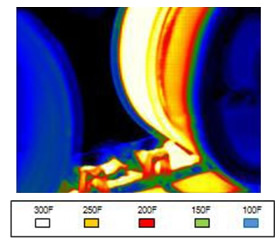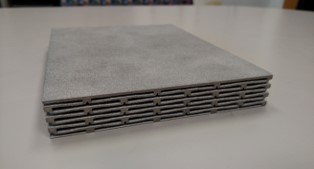Advanced Structures & Materials
Annual PlanMeta-Material Design for Tank Track Pads
Project Team
Government
Matt Castanier, David Ostberg, Bill Bradford, U.S. Army GVSC
Faculty
Gang Li, Nicole Coutris, Clemson University
Industry
Joshua Goossens, Tenneco
Christopher Cardine, William Vanslembrouck, Mike Honaker, General Dynamics Land Systems
Student
Sampath V. Dangeti, Nitheesha Cheenadi, Zachary Satterfield, Neehar Kulkarni, Samuel Franklin, Andrew Montalbano, Qing Mao (post-doc), Clemson University
Project Summary
Two projects running from 2013-2016 (3.9 Meta-Material Design for Tank Track Pads) and 2017-2018. (3.13 Systems Approach to Wheel and Pad Metamaterial Design including Robustness Issues) are described here.

Tank track elastomeric pads have been under investigation for many years because of their high rate of failure. Improving this component design would increase military vehicle reliability, reduce maintenance costs and time. From work focused on understanding damage mechanisms, it was observed that the temperature of the wheel and pad elastomer increases up to 250-300deg-F. The high temperature increase may be attributed to the hysteretic property of elastomeric material. The dynamic cyclic loading during vehicle motion results in substantial energy dissipation inside the elastomer and consequent temperature rise.

The objective is to substitute the elastomeric material with an elastic material which does not suffer from hysteretic losses. Elastomers are highly compliant and therefore used in the track pad; however, they have relatively high loss coefficients. Elastic materials (such as metals) have lower loss coefficients but are stiffer due to higher Young’s moduli.
This first study enabled us to design a titanium pad that replaces the elastomeric pad, and that deforms similarly to the elastomeric pad under a static load.

For the flat titanium pad, the deformation is minimal, and thus the initial results should be valid. For the second study, as the wheels deform when in contact with the pads, the contact surface between both components dictates the magnitude of the pressure, thus the surface of contact needs to be computed then transmitted to the pad design. This coupling opens up a new design space and allows us to explore tuning the static and dynamic characteristics of the system such as the weight, vibration and harshness performances.
Publications:
- Dangeti, S.V, Satterfield, Z., Fadel, G.M., Li, G., Coutris, N., Castanier, M. and Ostberg, D. “Identifying target properties for the design of meta-material tank track pads”, ASME IDETC2015.
- Satterfield, Z., Kulkarni, N., Coutris, N., Li, G., Fadel, G.M., Castanier, M, “Unit cell synthesis method to design meta-materials with targeted nonlinear deformation response” J. Mech. Des, vol. 139, 121401, 2017
- Franklin, S., Kulkarni, N., Li, G., Coutris, N., Fadel, G.M., “The Influence of Material Property Variances and Printing Tolerances on the Mechanical Behavior of an Additively Manufactured Meta-Material Tank Track Backer Pad”, Proceedings of the Design conference, Dubrovnik, Croatia, August 2018
- Franklin, S., Fadel, G.M., Li, G., Coutris, N, and Castanier, M., “Exploration of layer specific dimensional multipliers in modified unit cell synthesis method meta-materials for nonlinear applications”, ASME IDETC2019 Paper no 98464
- Kulkarni, N., Franklin, S.J., Fadel, G.M., Li, G., Coutris, N., and Castanier, M.P. “Modified Unit Cell Synthesis Method for Design and Sensitivity Analysis of Tank Track Pad Meta-material. Submitted to ASME J. Mech. Des, Paper MD19-1313, 2019

